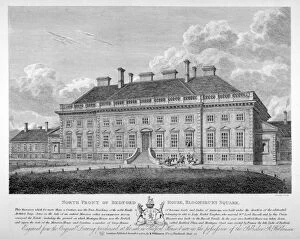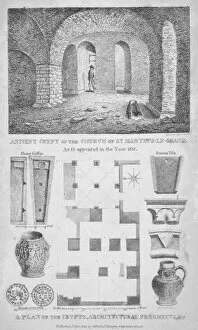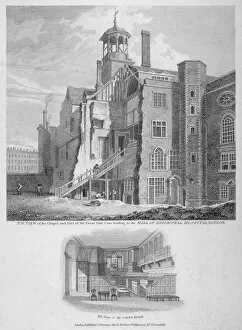Bartholomew Howlett Collection
Bartholomew Howlett, a renowned artist of the 19th century, captured the essence of London's rich history through his exquisite paintings
For sale as Licensed Images
Choose your image, Select your licence and Download the media
Bartholomew Howlett, a renowned artist of the 19th century, captured the essence of London's rich history through his exquisite paintings. His keen eye for detail and skillful brushstrokes brought to life various landmarks and scenes from different eras. In 1822, Howlett depicted the serene view of the pump near Clerks Well in Ray Street, Finsbury. The artwork transports us back to a time when this area was bustling with activity. Another masterpiece by Howlett showcases Bedford House in Bloomsbury Square. Painted in the same year, it allows us to glimpse into the grandeur and elegance that once graced this iconic building. Moving on to St Paul's School in City of London, we are presented with an intimate portrait capturing its architectural beauty. This painting from 1825 is a testament to Howlett's ability to bring out both structure and character within his subjects. The interior view of the remains of the Church of St Martins le Grand takes us back even further into history. With intricate details meticulously rendered by Howlett's hand, we can almost hear echoes of prayers whispered within these ancient walls. Leadenhall Street comes alive through another one of Bartholomew Howlett's works from 1825. The hustle and bustle depicted here gives us a glimpse into daily life during that era—a true snapshot frozen in time. Traveling further back still, we find ourselves immersed in Cornhill as it appeared in 1630—an image recreated by Howlett himself nearly two centuries later. Through his artistry, he bridges gaps between generations and enables us to witness how our beloved city has evolved over time. Cheapside beckons us next with its depiction from 1585—another example where Bartholomew Howlett masterfully captures historical moments for posterity. We can almost feel ourselves walking alongside those who lived centuries before us along this vibrant street.











